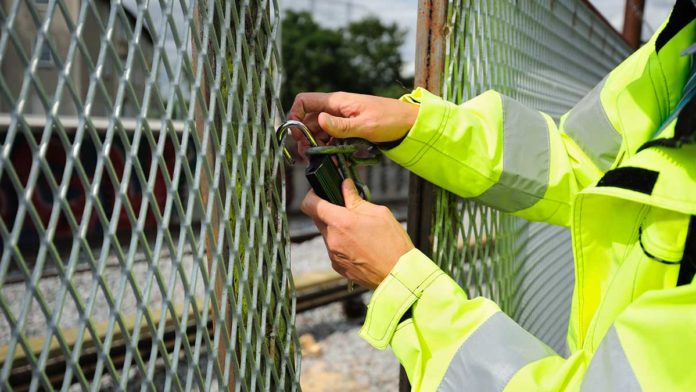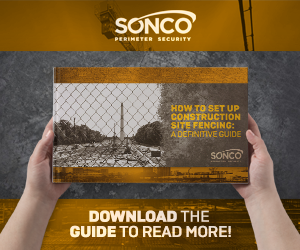A tilting or fallen chain-link fence is an eyesore, but more important than that, it’s a safety hazard.
There are several ways to properly increase the security of chain-link fencing – some effective and some not. The goal, however, is the same, to make the fence as secure as it needs to be for its purpose and as secure as it can be, given local weather and the overall environment in the area where it is installed.
To explore the broader topic of fencing, you can also read What is Chain-link Fence?
There are quite a few ways to reinforce a chain-link fence and it should be a primary consideration during installation. A lot can go wrong with a fence that is not secure. Breaches can be costly.
Thieves, vandals, or even just unauthorized people who enter your property or work zone can wreak havoc. They can steal materials and expensive equipment or damage your property. Kids looking for adventure or pedestrians looking for a shortcut can be injured or, worse, killed due to accidents.
There’s simply too much that can go wrong to not make your fence as secure as it possibly can be.
How can I make the chain-link fence more secure?
Making a chain-link fence more secure is a wise investment. It is not very difficult, and the cost is minimal compared to what you would have to pay if you experienced a loss because you failed to secure it.
Many of these methods can be used during your chain-link fence installation, whether you do it yourself or hire someone to do it for you. If you hire someone, they may be able to advise you on the most effective security measures for your needs.
You might look into how to make a chain-link fence taller using bases that increase height or by running wire along the top. You can also opt for fence panels that are already taller than the industry average, such as this 8’x10’ panel from SONCO Safety Marketplace.
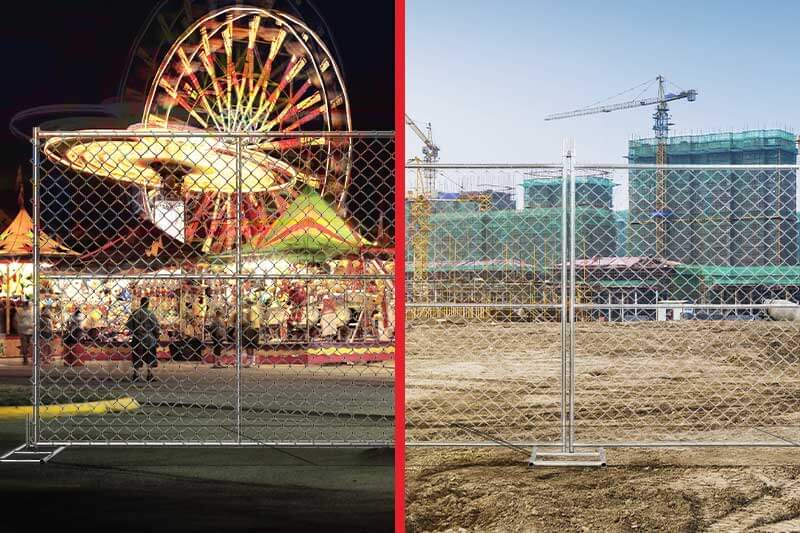
It is not uncommon for people to scale fences to get into the secured area. Often, they are up to no good, but even if they have no intention of causing any destruction or loss to your property, there is still liability there you simply cannot afford.
Knowing how to secure the bottom of a chain-link fence is also important because animals and children can slip under it. And if the fence is loose enough or the gap large enough, even some adults can find their way under.
It’s best to secure your temp fence all the way around to prevent any breaches.
These are some of the most common ways to secure a fence.
Brackets
Fence brackets can help make your fence more stable. It won’t be as easy to push over and the chain-link won’t be moveable, meaning they won’t be able to create any gaps to gain access. They do not hold the fence upright unless attached to additional stabilizing posts.
Stakes
Fence stakes attach to the posts and are sunken into the ground. They are meant to reinforce the posts, which can work on soft soil but are not viable for fencing on pavement or hard ground.
Screens
A chain-link fence covering, or screen, increases the security of your area. These screens can be opaque or semi-transparent, offering 70% to 80% blockage. Some screens also feature custom artwork or branding so if you’re looking for ideas to cover a chain-link fence so it looks more attractive or professional, that may be the way to go.
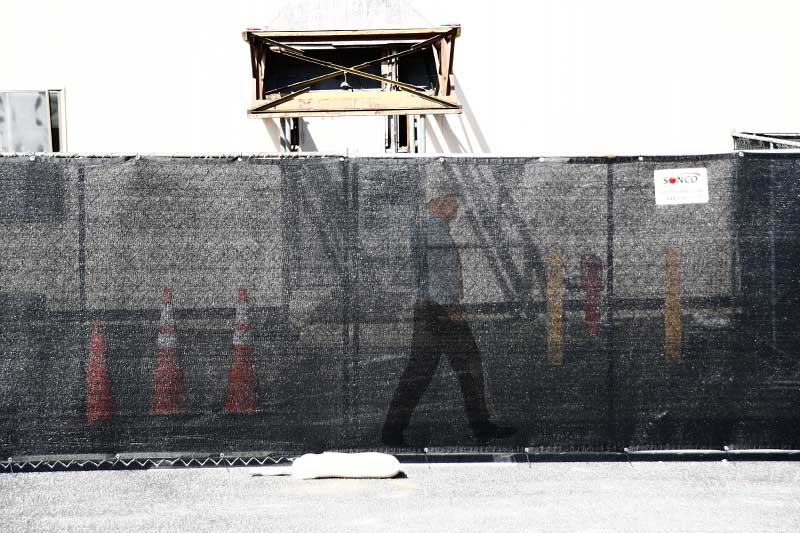
Bottom rail
Installing a bottom rail on your chain-link fence can help secure the bottom. This will prevent anyone or anything from accessing your area by going under the fence.
Hurricane straps
Hurricane fence straps are typically made of thin metal and are used to reinforce fencing at vulnerable points. Typically, the weak areas are at the posts, ends, and gates, but you should inspect your fence to identify all weak points.
Posts set in concrete
When installing a chain-link fence some people set their posts in concrete. If the fence is permanent, this means using concrete in the post hole. Temporary fences will use concrete-filled bases for the posts to be set in.
Tube stands
Tube stands fit over the bottom of the posts and extend along the ground for several inches. This can make them a tripping hazard. Additionally, they’re not very stable in harsh weather conditions.
Barbed Wire
Barbed wire is a versatile addition to most fences, providing an extra layer of security. When strategically installed with three or six strands above a chain-link fence, it not only enhances protection but also serves as a strong deterrent against climbing. Just make sure to use it responsibly and in accordance with local regulations.
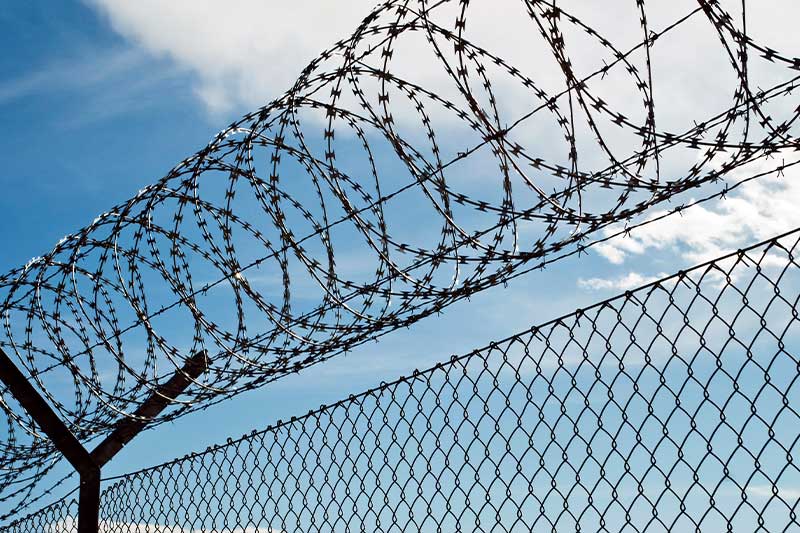
Tension Wire
The chain-link fence bottom wire is called tension wire, and it can be very effective in stabilizing the bottom part of your fence and may deter anyone or anything from crawling under your fence.
Anchor Bases
Stabilization is another vital issue. A fallen fence or a leaning fence can be breached. You want to prevent that. If your fence falls over or even leans, it leaves your area vulnerable. Chain-link fence bases secure the base of the fence, ensuring that it remains upright.
There are four basic levels for anchors for chain-link fence stabilization.
- Anchor Stand – Professional look, increased safety, medium stability.
- Anchor Weight – Durable, increased security, higher level of stability than an Anchor Stand.
- Anchor Stand and Anchor Weight – Using these together is a versatile option providing excellent stability and mobility.
- Anchor Block – Optimal fence stability option, superior support, durable, and high-vis to prevent trips and falls.

Inspection and Maintenance of Fence
In order to keep your fence as stable and secure as possible, regular inspection and maintenance is vital. Look for any weak areas as well as any area that may be rusting or showing excessive wear
If any part of your fence is damaged, it’s a good idea to address it quickly by either repairing or replacing it.
Inspection and maintenance of your fence should be scheduled according to various factors including weather (harsher weather can be hard on fences so more frequent inspections are recommended), traffic, and if the fence is moved frequently.
Frequent movement can cause more wear and tear on the fence than if the fence was always stationary, even if it’s just being moved to allow access.
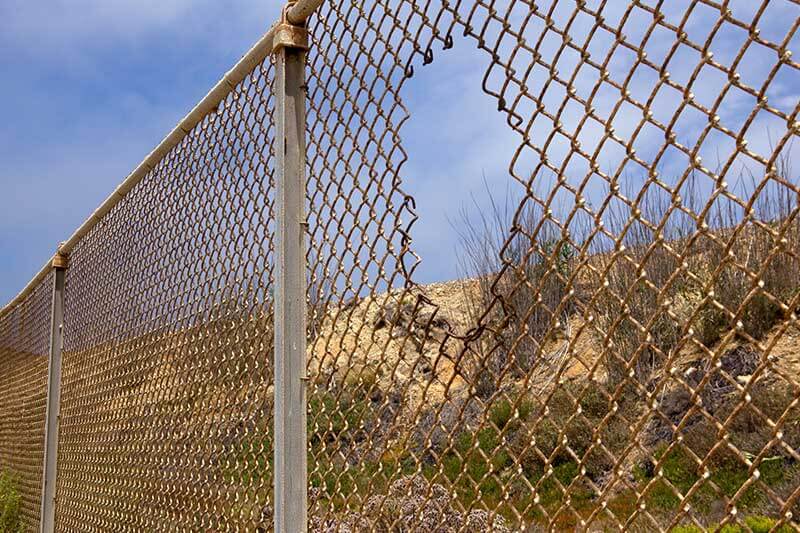
Perimeter Security
Using only sandbags and concrete blocks falls short in securing fence panels. Even if the fences are temporary, it’s crucial to keep the area safe for the entire project duration.
Anchor bases are the best option for fence security and stability in most cases.
You can easily pair this method with other security measures such as screens to achieve an optimally secure site.
For more tips on security, click here to go to our Guide to Construction Site Security!


